Texas Flying Legends
by Chuck Cravens


The Christmas season was part of the time period covered by this update so, in honor of the season, I thought I would show a photo that wouldn’t ordinarily make it into an update: This is what an AirCorps-style Christmas tree looks like! The P-47 tail cone is festooned with lights.
Update:
In late December and early January, the initial tail cone assembly was finished. As happens so often in a warbird restoration, that assembly was taken apart to be painted with a protective zinc chromate coating.
We also received some of Rob McCune’s great CAD renderings that show us how the main assemblies fit together.
Renderings

Rob McCune’s CAD render of the underside clearly shows the front end of the supercharger ducting.

This is a rendering of the interior of the fuselage.

The roominess of the P-47 cockpit is evident in this shot from roughly the pilot’s perspective.

Most of the fixed framework shows here, missing only the movable surfaces like the ailerons, flaps, rudder, and elevators.

Rear angle of the framework is shown in this view.
Parts Fabrication
Since there are 23,337 different parts in a P-47D-23, not including the engine, prop, accessories or rivets, it’s no wonder that parts fabrication is a continuous process. That number is about 60% larger than the number of parts you would find on a Mustang.

The largest part in this image is the tail wheel shock support forging.

Another view of the tail wheel shock support forging, to the right are a tail wheel lever and an idler for the tail wheel uplock.

Steve uses this setup to machine the slots in the wing mounts.

The upper rear wing mount is shown here.

This is an opposite side view of the same part.

The wing mount has been drilled for the bolts that attach it to the crosstie. More than one drill bit was destroyed in the process!

This is a different angle on the drilled mount.

This rib getsplaced in the rear fuselage, about centered under the horizontal stabilizer.

This casting mounts on the elevator idler support tube.

The elevator idler support tube exits the fuselage through the forgings that are temporarily slid onto the tube.
Initial Tail Cone Assembly
The tail cone has been in the process of assembly and fitting for quite a while now. That was finished up this month as you will see in the following images.

Robb fits a plate under the elevator idler support tube.

Here the elevator support forging shown earlier after clamping in place.

Here is a side view as Robb works on fitting the plate.

Here is another angle as the elevator idler support plate is put on.

The upper fuselage web is being fitted here.

This is a tighter view of the web as Robb clecoes the support web to the tail cone.

Randy is fitting a corner plate.

This shot shows Randy marking the rear fuselage web support.

Randy is fitting the upper rear fuselage web. It strengthens the area under the horizontal stabilizer.

The rear portion of the upper fuselage web appears clecoed on here.

This view shows the rear fuselage web more clearly.

Hunter drills a hole for a splice plate in a fuselage stringer.

The assembly is complete and fitted.
Disassembly for Painting
Once everything has been fitted properly, the tail cone assembly can be taken apart for painting.

The upper fuselage tail wheel mount has been removed for painting.

Hunter deburrs one of thousands of holes that will need that process.

Fuselage ribs that were also removed for painting.

The guys disassemble the tail cone for painting.

The tail cone fixture stands empty in this long view of the restoration shop.
Reassembly of the Tail Cone
Painting didn’t take long and final assembly of the now corrosion-protected parts began as soon as the parts
were dry.

These parts are the supports for the lifting tube that runs through the fuselage.

Some painted fuselage parts, the fuselage rib with no bottom section is that way because it is centered over the tail wheel well. The tapered part is the jack point brace.

This rib assembly forms the tail wheel support structure.

Tailwheel pivot brackets get their coat of zinc chromate. They will eventually be riveted and bolted to the tail wheel support structure and the fuselage rib to which it attaches.

The tail wheel fitting brace is the piece sitting at an angle. Eventually a tube that mounts the uplock goes through the hole.

Here the forward part of the top rear fuselage web is being reassembled

This fuselage rib goes in at the forward station of the tail wheel well and you can see the upper fuselage tail wheel mount bracket already in place.

The painted vertical is fin back in the fixture. Now many of the clecoes have been replaced by permanent rivets.

After paint the reassembly begins.
 .
.
Randy takes some notes as reassembly progresses.

This CAD drawing shows the fuselage fixture we will be building.
The tail cone fixtureis complete and has been shown several times but the rectangular section to the left of the tail cone is the fixture we need to build before the forward fuselage can be assembled.

Surely this aircraft had a turbo charged fuel system and not in fact Supercharged as stated
You are correct that the P-47 has a turbo charger, but the R-2800 also has a single stage supercharger on the back of the engine and the ducting referred to in the caption goes from the turbocharger to the supercharger. Sorry for the confusion. I could have worded it better.